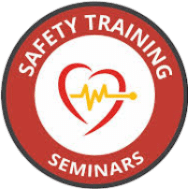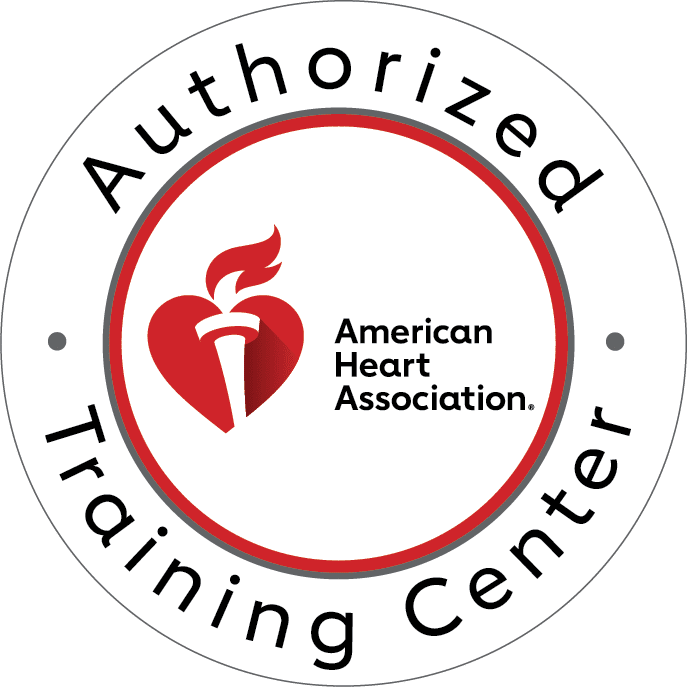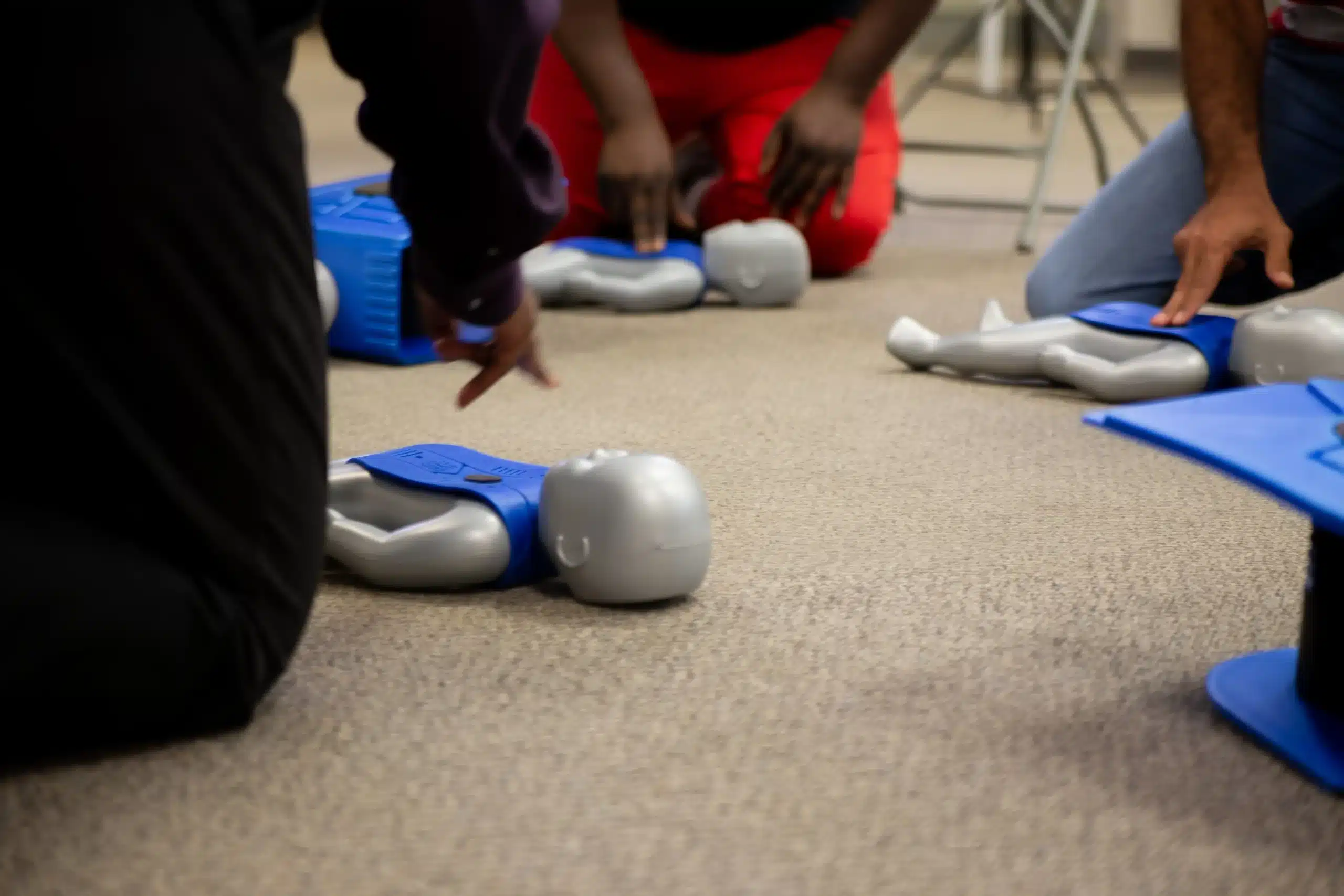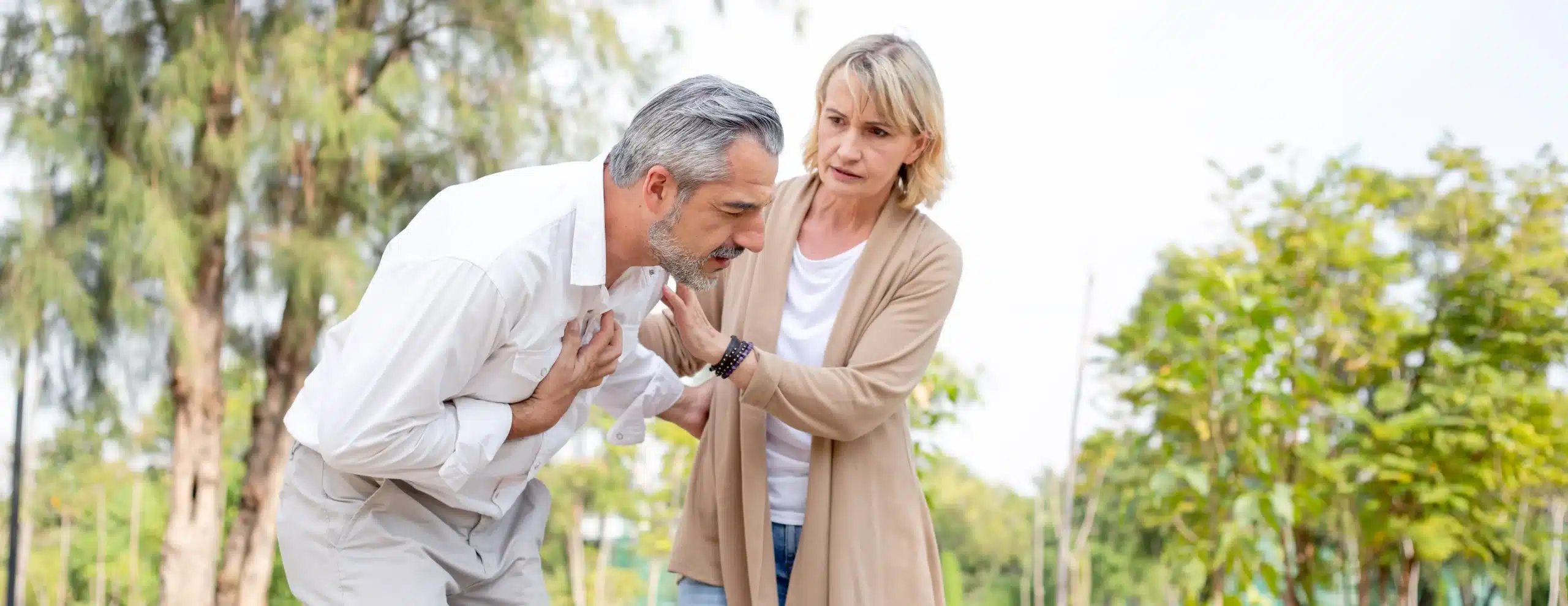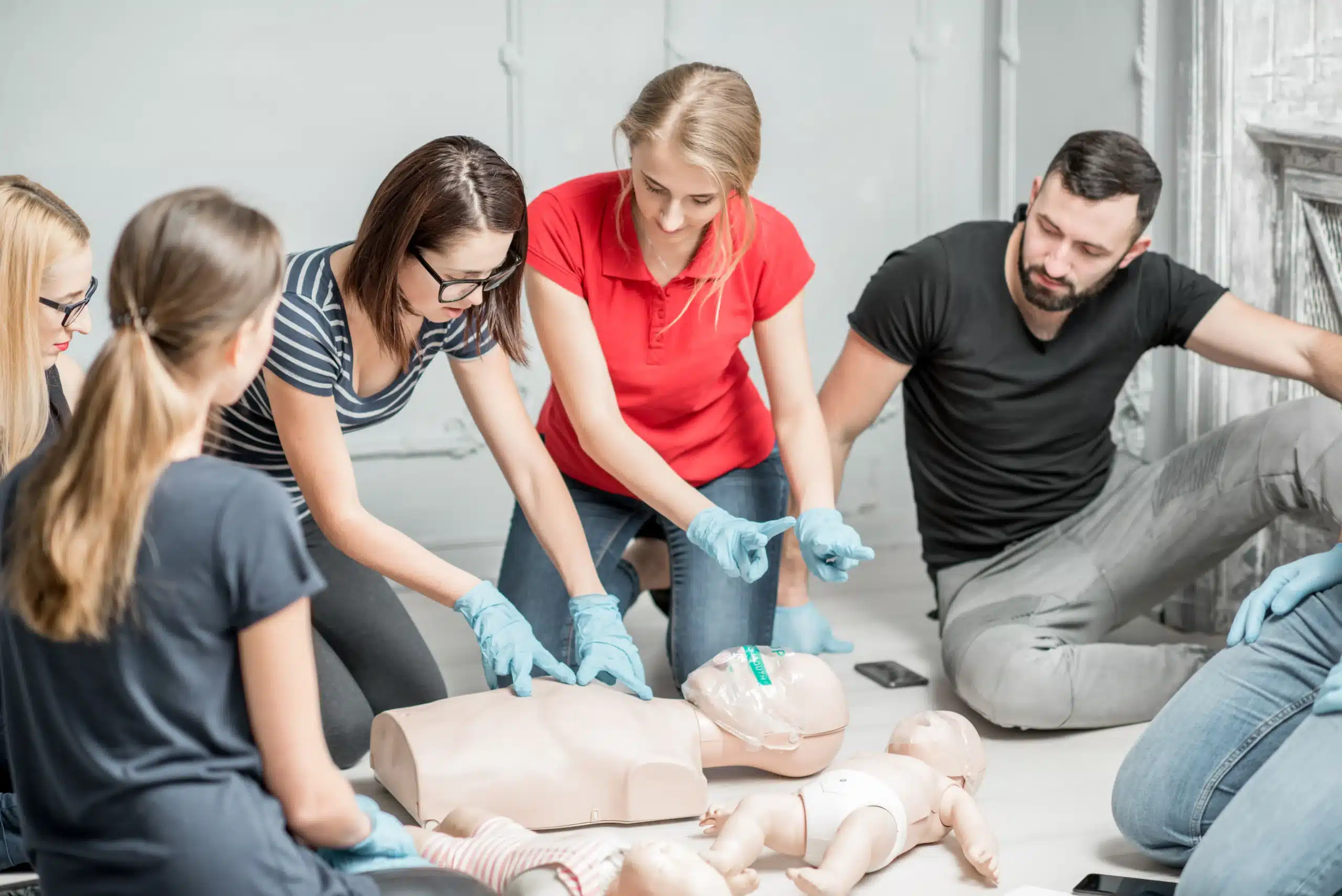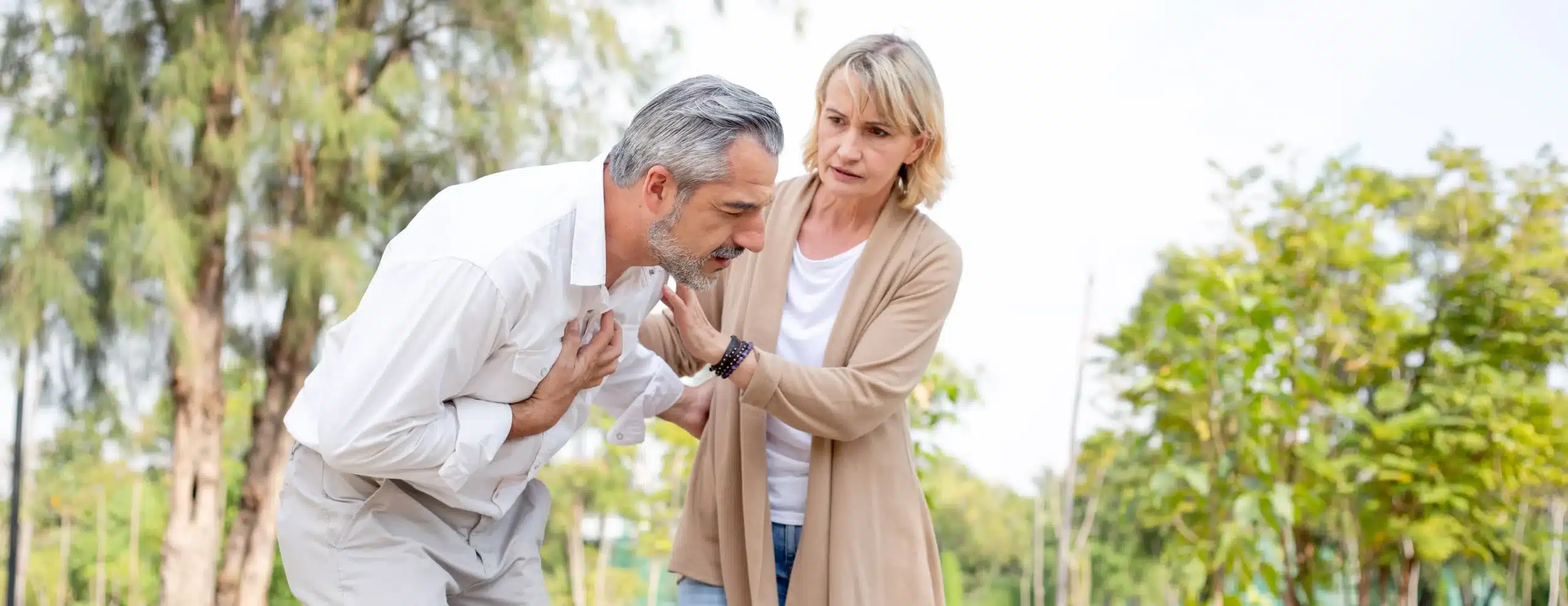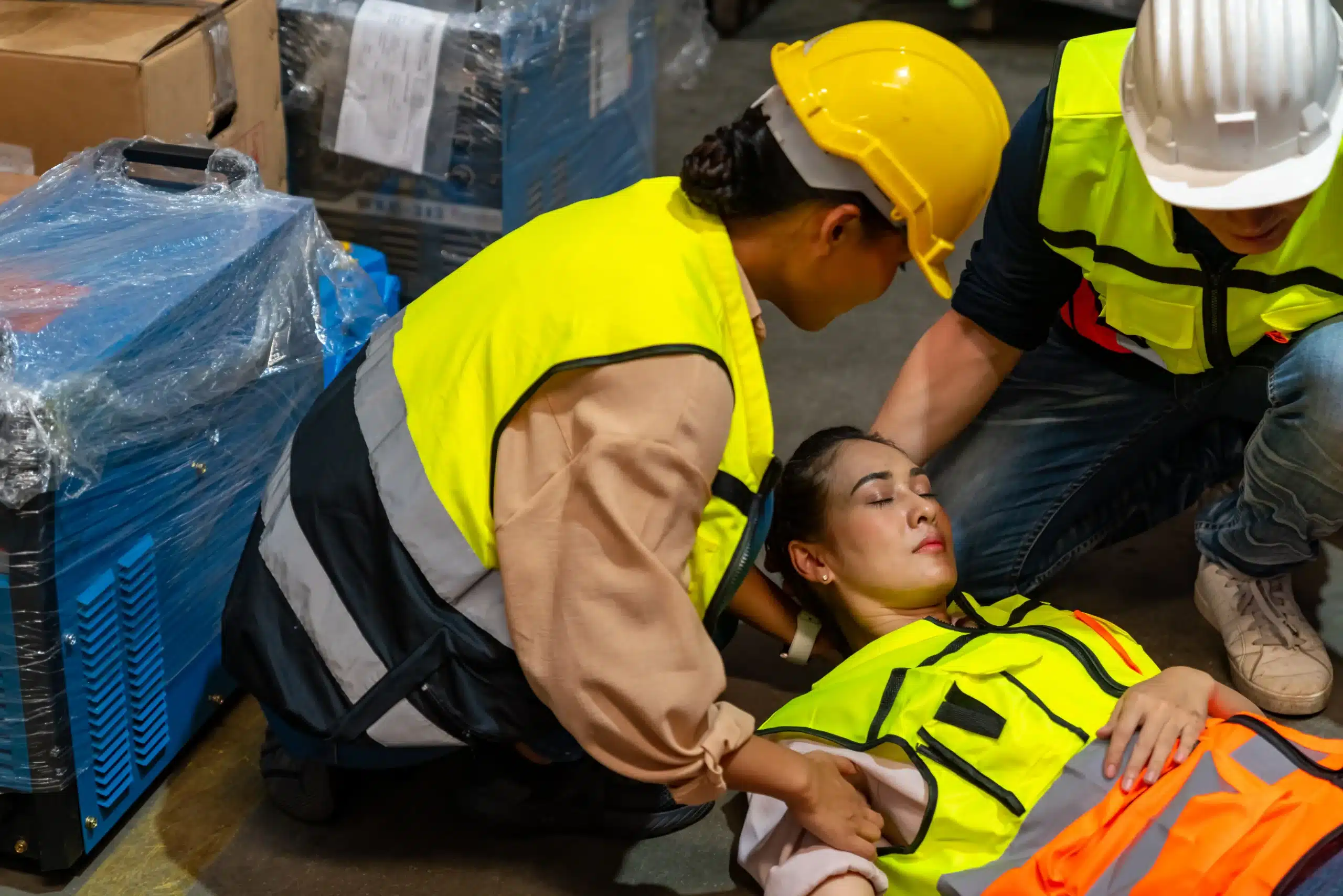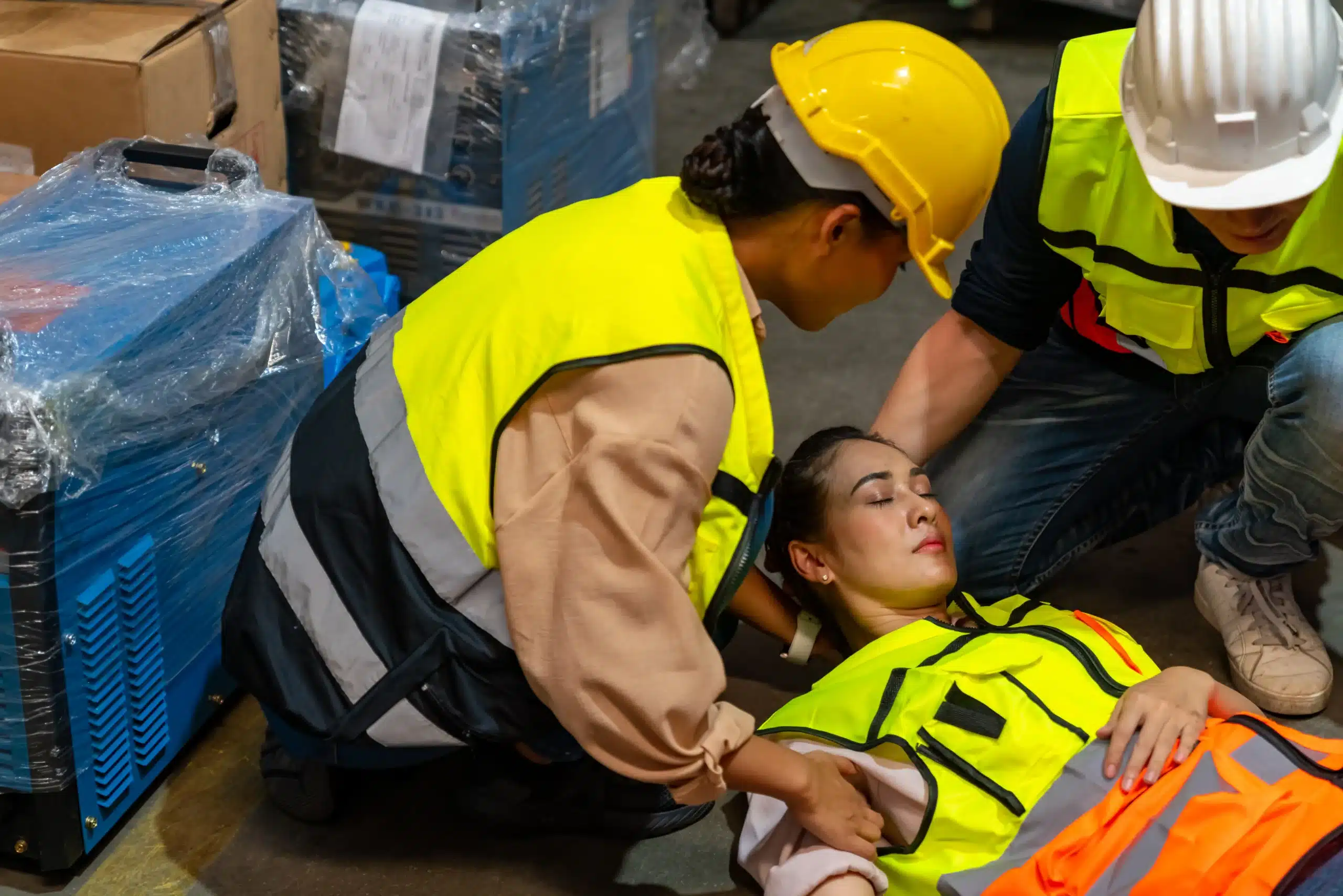Emergencies can happen anytime, anywhere. Would you know what to do if someone near you experienced sudden cardiac arrest? CPR training gives you the skills and confidence to respond effectively in these critical situations. This guide makes finding CPR training nearby simple and straightforward. We’ll cover everything from understanding different CPR certifications to choosing the right course and debunking common myths. We’ll also explore the importance of hands-on practice, how to maintain your certification, and the significant impact CPR training has on community safety. Whether you’re a parent, a teacher, or simply someone who wants to be prepared, this guide will help you find the perfect CPR training nearby and empower you to make a difference.
Key Takeaways
- CPR skills empower you to save lives: Learning CPR, regardless of your background, equips you to respond effectively during emergencies. Find a course and become a vital community asset.
- Select accredited CPR training: Choose a program with experienced instructors, hands-on practice, and current curriculum for a recognized certification and the best learning experience.
- Maintain your CPR skills: Regularly refresh your training and stay up-to-date with the latest guidelines to ensure you’re always prepared to respond confidently in emergencies.
Why CPR Training Matters: Life-Saving Skills for Everyone
CPR training gives you the skills to respond effectively during cardiac arrest emergencies. It empowers you to act immediately, potentially saving a life while waiting for paramedics or EMTs. Learning CPR isn’t about becoming a doctor; it’s about having the confidence to step in when every second counts. CPR certification courses, like those offered by Berkeley CPR Classes, make this life-saving training accessible to everyone. These courses cover essential techniques like chest compressions and rescue breathing, giving you the knowledge and practice you need to respond confidently in critical situations. Choosing a quality training provider is key to receiving accurate and reliable instruction, ensuring you’re prepared to make a real difference. Berkeley CPR Classes offers a range of American Heart Association certification courses, including BLS for healthcare providers and Heartsaver courses for the general public. Don’t let misconceptions hold you back—CPR training is a valuable skill for anyone. Check out our low price guarantee and find a class that fits your needs.
Find Quality CPR Training Near You
Finding the right CPR class can feel overwhelming, but it doesn’t have to be. Start by exploring these trusted resources:
American Heart Association (AHA)
The AHA offers a comprehensive range of CPR and first aid courses, from basic life support to advanced cardiovascular care. Their website provides a convenient search tool to locate certified training centers in your area. AHA-certified instructors adhere to rigorous standards, ensuring you receive high-quality training. For those in Alameda, Oakland, and Berkeley seeking AHA-certified courses, Berkeley CPR Classes offers convenient options, including BLS and ACLS certifications.
American Red Cross
The American Red Cross is another reputable organization offering CPR and first aid training. They provide various courses tailored to different needs, including community members, healthcare providers, and workplace responders. Check their website for class schedules and locations near you.
Berkeley CPR Classes
For residents of Alameda, Oakland, and Berkeley, Berkeley CPR Classes offers a convenient and affordable option for CPR certification. They provide a variety of courses, including discount group classes and specialized training like RQI classes. Their commitment to a low price guarantee makes quality training accessible.
Local Hospitals and Medical Centers
Many hospitals and medical centers offer CPR and first aid training to the public. Contact your local facilities to inquire about available courses and schedules. These programs often benefit from experienced medical professionals as instructors.
Community Colleges
Community colleges frequently offer CPR and first aid courses as part of their continuing education programs. These courses are often cost-effective and provide a structured learning environment. Check with your local community college for upcoming course offerings.
Fire Departments
Some fire departments offer CPR training to community members. Contact your local fire department to see if they provide classes and how to register. Learning from first responders can offer a unique perspective on emergency care.
Choose the Right CPR Course
Knowing which CPR course is right for you depends on your background and goals. Here’s a breakdown of common CPR certifications:
Basic Life Support (BLS)
BLS certification is essential for healthcare professionals like doctors, nurses, paramedics, and other medical personnel. It covers core life-saving skills for adults, children, and infants, including CPR, AED use, and how to help someone who is choking. BLS also emphasizes teamwork and effective resuscitation techniques. If you’re pursuing a healthcare career, BLS certification is likely required.
Advanced Cardiac Life Support (ACLS)
ACLS training builds on the fundamentals of BLS. Designed for healthcare providers who respond to cardiopulmonary arrest and other cardiovascular emergencies, ACLS covers advanced airway management, pharmacology, and team dynamics during resuscitation. This certification is crucial for professionals in critical care, emergency rooms, and intensive care units.
Pediatric Advanced Life Support (PALS)
PALS focuses on the specific needs of infants and children during respiratory or cardiovascular emergencies. Like ACLS, PALS training is geared towards healthcare providers, including pediatricians, pediatric nurses, and emergency medical technicians. The course covers pediatric-specific algorithms, resuscitation techniques, and clear team communication.
Heartsaver CPR/AED
Heartsaver courses are perfect for anyone who wants to learn basic life-saving skills, regardless of medical background. These courses teach CPR and how to use an AED on adults, children, and infants. Heartsaver training is a good fit for teachers, coaches, childcare providers, office workers—really, anyone who wants to be prepared for an emergency. You can find more information about these courses on the American Heart Association website. We also offer these courses at our Berkeley location, and with our low price guarantee, you can be confident you’re getting quality training at an affordable price.
First Aid Combination Courses
Combining First Aid with CPR and AED training offers comprehensive emergency preparedness. These courses teach essential skills for handling injuries, illnesses, and environmental emergencies, along with CPR and AED use. A combined course is valuable for anyone, especially those working with children or in education. Consider our discount group classes for a cost-effective way to train your team.
Evaluate CPR Training Programs
Finding the right CPR training program involves more than just proximity. It’s about ensuring you receive high-quality instruction that prepares you for real-life emergencies. Here’s what to consider:
Accreditation and Certification
Look for programs accredited by nationally recognized organizations like the American Heart Association or the American Red Cross. Accredited organizations uphold rigorous standards, ensuring instructors are qualified and the curriculum is current. This accreditation adds credibility to your certification, making it widely accepted by employers and institutions. For example, Berkeley CPR Classes offers American Heart Association certification courses ensuring your training meets these high standards.
Instructor Qualifications and Experience
Instructors should be certified and possess significant experience in emergency response. A skilled instructor can make all the difference in your learning experience. They can provide personalized feedback, answer your questions thoroughly, and create a supportive learning environment.
Course Content and Duration
The course should cover essential CPR techniques, including chest compressions, rescue breaths, and how to use an AED. The duration should provide ample time for both learning and practicing these skills. Consider whether the course content aligns with your specific needs, such as BLS for healthcare providers or a more general CPR/AED course. Choosing the right CPR training company involves considering factors like accreditation, instructor qualifications, course content, and overall reputation.
Hands-on Practice Opportunities
Hands-on practice is crucial for mastering CPR. The more you practice on training mannequins, the more confident and prepared you’ll feel in a real emergency. Hands-on training allows you to develop muscle memory and refine your technique under the guidance of your instructor.
Use of Advanced Technology
Some training programs incorporate advanced technology, such as real-time feedback systems. These systems can analyze your compressions and provide immediate feedback, helping you perfect your technique and improve the effectiveness of your CPR. Studies have shown the positive impact of real-time feedback during CPR training.
Understand CPR Training Costs
CPR training is an investment in life-saving skills, and understanding the costs is an important part of choosing the right course. While cost is a factor, the value of this training is immeasurable—it equips you to potentially save a life.
Factors Affecting Price
Several factors influence CPR training costs. Location plays a significant role, as prices can differ between urban and rural areas, or even between states. The type of course you choose also matters. More advanced courses like ACLS (Advanced Cardiac Life Support) typically cost more than basic CPR training. The training provider matters too. Reputable providers who adhere to American Heart Association standards often charge more, reflecting the quality of instruction, materials, and certification. Be wary of significantly discounted courses from non-accredited providers, as they may not meet industry standards. Choosing the right CPR training company is crucial for receiving quality instruction. A good training company will offer post-training support, such as refresher courses and access to updated resources. Finally, class size can impact cost; smaller classes often come with a higher price tag due to the personalized attention. Overcoming barriers to CPR training in low-resource settings often involves finding affordable options.
Average Costs for Different Course Types
The cost of CPR training varies widely. Basic CPR and First Aid courses can range from around $50 to $100. More specialized training, such as PALS (Pediatric Advanced Life Support) or BLS for healthcare providers, can range from $100 to $200 or more. CPR training costs are generally reasonable considering the value. It’s always a good idea to check with various providers like the Red Cross or your local fire department for current pricing in your area. You can find examples of CPR course costs from providers like Absolute Health.
Group Discounts and Promotions
Many CPR training providers offer discounts for group bookings, making it a cost-effective option for workplaces, community groups, or families. Some providers also run occasional promotions or discounts, so it’s worth checking their websites or contacting them directly. Berkeley CPR Classes offers a low price guarantee and discounts for group classes, making high-quality training accessible. Don’t hesitate to ask about potential discounts—it never hurts to inquire!
What to Expect During CPR Training
CPR training blends theory and hands-on practice to equip you with the skills and confidence to respond effectively in emergencies. Here’s a glimpse of what you can expect:
Classroom Instruction
Your training begins with classroom instruction led by a certified instructor. Expect to cover essential topics like recognizing the signs of cardiac arrest, understanding the chain of survival, and learning the steps of CPR for different age groups (adult, child, and infant). Your instructor will explain the importance of performing high-quality CPR, including proper hand placement, compression depth and rate, and minimizing interruptions. Choosing a reputable training provider like Berkeley CPR Classes ensures you receive accurate and up-to-date information, setting a solid foundation for your practical skills development. Look for providers with accreditation from recognized organizations like the American Heart Association.
Practical Skills Assessment
The core of CPR training lies in hands-on practice. You’ll practice CPR techniques on manikins, allowing you to develop muscle memory and refine your skills under the guidance of your instructor. This training emphasizes proper body mechanics, hand positioning, and delivering effective compressions and breaths. Improving CPR training involves ample hands-on practice, so expect plenty of opportunities to hone your technique. You’ll also learn how to use an automated external defibrillator (AED) and practice integrating it into your CPR response.
Written Examination
Most CPR certification courses include a written exam to assess your understanding of the classroom material. This exam typically covers topics like CPR steps, recognizing cardiac arrest, and using an AED. The exam reinforces your learning. Your instructor will prepare you thoroughly during the classroom instruction.
Blended Learning Options
Many CPR training providers now offer blended learning, combining online instruction with in-person skills sessions. This flexible approach allows you to complete the theoretical portion online at your own pace, then attend a shorter in-person session focused on hands-on skills practice and assessment. Some programs, like the BEACON program, use computerized manikins and video conferencing to enhance the learning experience. Blended learning offers a convenient way to fit CPR training into your busy schedule.
Maintain Your CPR Certification
CPR certification isn’t a one-and-done deal. Staying current with the latest guidelines and techniques is crucial for providing effective care in emergencies. This section covers what you need to know about maintaining your CPR skills and certification.
Renewal Requirements
CPR certifications are typically valid for two years. Keep track of your expiration date—a good training provider will send reminders—so you can recertify before it lapses. Check with your certifying organization, such as the American Heart Association or the American Red Cross, for specific renewal requirements. Don’t let your skills expire—stay prepared to respond confidently when needed.
Continuing Education Options
Beyond recertification, consider ongoing education to enhance your skills. A quality training company often offers refresher courses, advanced training options (like ACLS or PALS), and access to updated resources. These resources can help you stay informed about the latest CPR guidelines and techniques. Look for providers, like Berkeley CPR Classes, who offer post-training support to help you maintain proficiency.
Refresher Materials and Resources
Regularly reviewing CPR skills is key to retaining them. Many organizations offer free refresher materials, including videos and quick guides, to help you practice. Even a quick review every few months can significantly improve your recall and performance in a real emergency. Check with your certifying organization or training provider for access to these helpful resources. Refreshing your skills every three months is a good practice to maintain proficiency. Remember, consistent practice is the best way to ensure you’re ready to respond effectively when it matters most.
Register for CPR Training
Once you’ve chosen a CPR class, actually registering is usually straightforward. This section covers the process, along with a few tips to help you prepare for a smooth and successful training experience.
Online Registration Process
Most CPR training providers offer online registration. Look for a “Register” or “Sign Up” button on the provider’s website. You’ll likely find a calendar or list of available courses with dates, times, and locations. Select the class that fits your schedule and follow the prompts to complete your registration. Berkeley CPR Classes, for example, makes it easy to sign up for any of our courses.
What to Bring and Wear
CPR training involves hands-on practice, so wear comfortable clothing that allows for a full range of motion. You’ll be kneeling and practicing chest compressions, so avoid restrictive clothing or high heels. Check with your chosen training provider for any specific requirements. Some organizations, like the Red Cross, may have guidelines about what to wear to your CPR training. You likely won’t need to bring anything other than a photo ID and your payment confirmation, but it’s always a good idea to double-check.
Pre-course Study Materials
While not always mandatory, reviewing any available pre-course materials can be helpful. Familiarizing yourself with basic concepts beforehand can make the in-class learning experience more effective. Some providers offer online resources or study guides. For example, the Red Cross provides free refresher materials to help maintain your skills between certifications. Even a quick review can boost your confidence and ensure you’re ready to learn.
Debunk Common CPR Training Misconceptions
Let’s clear up some common misunderstandings about CPR training. These myths can prevent people from learning this life-saving skill, so let’s set the record straight.
“CPR is Only for Medical Professionals”
One of the biggest myths is that CPR is only for doctors and nurses. The truth is, anyone can and should learn CPR. From stay-at-home parents and teachers to office workers and construction workers, CPR skills empower you to help in a medical emergency. The core techniques—chest compressions and rescue breaths—are straightforward to learn and practice, even without a medical background. In fact, bystander CPR can significantly improve survival rates before professional help arrives. Check out our CPR certification courses to see how easy it is to get started. We offer a variety of courses, including BLS and ACLS, to meet your specific needs.
“You Might Cause Serious Harm by Performing CPR”
Some people hesitate to perform CPR because they fear causing further injury. This fear is understandable, but the potential to save a life greatly outweighs the risk of harm. Doing something is almost always better than doing nothing in a cardiac arrest situation. Even if your technique isn’t perfect, providing chest compressions can circulate oxygenated blood and maintain vital organ function until paramedics arrive. Our instructors at Berkeley CPR Classes emphasize proper techniques to minimize any potential risks and build your confidence. We also offer a low price guarantee, so you can learn these essential skills without breaking the bank.
“Once You Learn CPR, You Don’t Need to Refresh Your Skills”
CPR guidelines and best practices can change, so it’s crucial to refresh your skills regularly. Just like any skill, CPR proficiency can fade over time. Renewal courses cover any updates to the guidelines and reinforce proper techniques, ensuring you’re always prepared to respond effectively. Explore our RQI classes for convenient and efficient refresher training. For larger groups, we also offer discount group classes to make training more accessible.
“Mouth-to-Mouth Ventilation is Always Necessary”
While traditional CPR involves both chest compressions and rescue breaths, hands-only CPR (compressions only) is often recommended for bystanders. This simplified approach can be just as effective in many situations and encourages more people to take action. Our CPR courses cover both methods, giving you the knowledge and skills to adapt to different emergency scenarios. Visit our website to find a class schedule that works for you.
CPR Training’s Impact on Community Safety
CPR training equips individuals with the skills to respond effectively during medical emergencies, significantly impacting community safety. From increasing survival rates to fostering a culture of preparedness, the benefits of widespread CPR training are undeniable. Let’s explore how these skills create safer communities for everyone.
Increased Survival Rates
When someone experiences sudden cardiac arrest, immediate CPR can be the difference between life and death. CPR Certification Online HQ highlights how prompt CPR can double or even triple a victim’s chance of survival. Those crucial first few minutes before professional help arrives are critical. Bystander intervention with CPR buys precious time, keeping the blood flowing and oxygen circulating to vital organs. This immediate action can dramatically improve the odds of survival and a full recovery.
Community Preparedness
A community filled with CPR-trained individuals is a more resilient community. CPR Certification Now emphasizes that improving CPR training is an ongoing process. Staying up-to-date with the latest guidelines, engaging in regular practice, and integrating technology create a culture of readiness. This preparedness empowers individuals to confidently respond to emergencies, creating a vital safety net within the community. Equipping more people with these skills strengthens the overall ability of a community to handle medical crises effectively.
Empowering Bystanders to Act
One of the biggest hurdles to bystander intervention is fear. Many people hesitate to perform CPR due to concerns about doing it incorrectly or causing further harm. Emergency First Response addresses these common anxieties, highlighting the concerns that prevent people from taking action. Another key factor, according to HeartCert CPR Training, is the fear of causing additional injury, particularly to vulnerable individuals like the elderly or children. Understanding these hesitations is the first step in overcoming them. Quality CPR training addresses these fears head-on, building confidence and empowering bystanders to act quickly and effectively in emergencies. Knowing they have the skills and knowledge to help can make all the difference in a life-or-death situation. This empowerment transforms bystanders from passive observers into potential lifesavers.
Related Articles
- Why CPR is Vital in Healthcare
- CPR Certification Near Me: A Complete Guide
- CPR Myths You Need to Stop Believing
- Low-Cost CPR Courses: Your Guide to Affordable Training
- Fast CPR Training: Get Certified in Berkeley Today
Frequently Asked Questions
What are the different types of CPR certification, and which one do I need? The right CPR certification depends on your role. Healthcare providers typically require BLS (Basic Life Support), ACLS (Advanced Cardiac Life Support), or PALS (Pediatric Advanced Life Support). Non-medical professionals can opt for Heartsaver CPR/AED or a First Aid/CPR/AED combination course. This blog post details the differences between these certifications to help you choose.
How do I find a reputable CPR training provider near me? Start by checking the American Heart Association and American Red Cross websites for certified training centers in your area. Local hospitals, community colleges, and fire departments often offer courses as well. For those in Alameda, Oakland, and Berkeley, Berkeley CPR Classes is a convenient option. Remember to verify accreditation and instructor qualifications when choosing a provider.
What does CPR training involve, and what can I expect during a class? CPR training combines classroom instruction with hands-on practice. You’ll learn how to recognize cardiac arrest, perform chest compressions and rescue breaths, and use an AED. Expect to practice on mannequins and participate in simulated emergency scenarios. Some courses also offer blended learning options, allowing you to complete some coursework online.
How much does CPR training cost, and are there any discounts available? CPR training costs vary based on location, course type, and provider. Basic courses typically range from $50 to $100, while more advanced certifications can cost more. Many providers offer group discounts or promotions, so be sure to inquire. Berkeley CPR Classes offers a low price guarantee and discounts for group bookings.
How often do I need to renew my CPR certification, and how can I stay up-to-date on the latest guidelines? Most CPR certifications are valid for two years. Check with your certifying organization for specific renewal requirements. To stay current, consider refresher courses, continuing education opportunities, and regularly reviewing CPR guidelines and best practices. Many organizations offer free online resources to help you maintain your skills.
